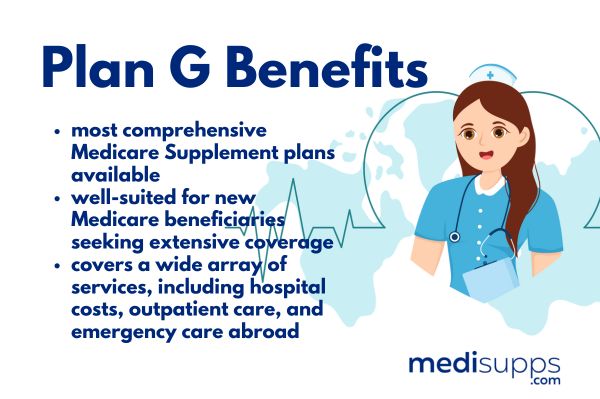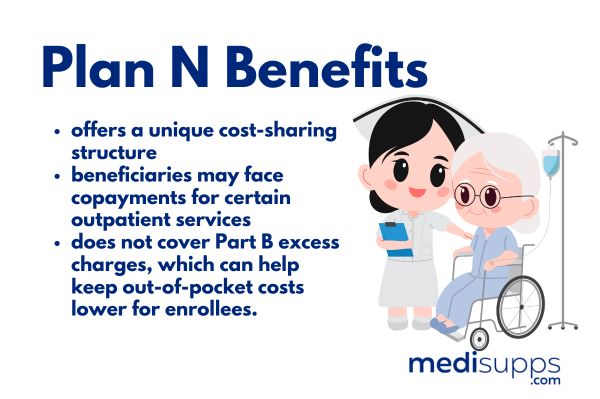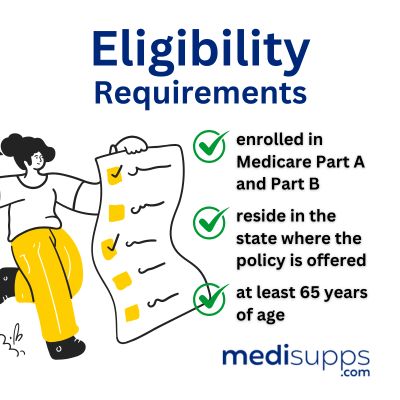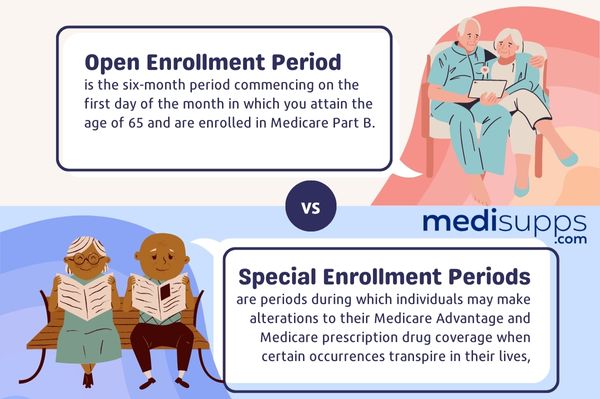
by Russell Noga | Updated May 2nd, 2025
If you’re a Medicare beneficiary in Idaho, understanding Medicare Supplement Plans Idaho, or Medigap, is essential. These plans help cover costs that Original Medicare doesn’t, such as copayments and deductibles. In this article, we’ll explain how Medigap plans work in Idaho and guide you through choosing the right one for your needs.
Key Takeaways
- Medicare Supplement Plans, or Medigap, in Idaho provide financial protection by covering out-of-pocket costs not paid by Original Medicare, with standardized plans available from A to N.
- Popular Medigap options in Idaho include Plans G and N, which offer extensive coverage, while high-deductible options are also available to manage premiums and out-of-pocket expenses.
- Beneficiaries have specific enrollment periods for Medigap plans, such as the Initial Enrollment Period, which allows enrollment without medical underwriting, and can leverage resources like SHIBA and the Idaho Department of Insurance for guidance.
Compare 2026 Plans & Rates
Enter Zip Code
Understanding Medicare Supplement Plans in Idaho 2026

Medicare Supplement Insurance, commonly referred to as Medigap, is a crucial component for Idaho seniors looking to cover costs that Original Medicare does not pay. These medicare supplement insurance plans are designed to provide financial security by bridging the gaps left by Medicare, such as copayments, coinsurance, and deductibles. Without a Medigap plan, the out-of-pocket expenses can quickly add up, making it essential for Medicare beneficiaries to understand their options.
In Idaho, Medigap plans are standardized and regulated to ensure that all beneficiaries receive uniform benefits across different insurers. This standardization means that no matter which insurance company you choose, the benefits of a specific Medigap plan (identified by letters A through N) will remain the same. Grasping the basics of these plans is the initial step in making an informed healthcare coverage decision.
What Are Medigap Plans?
Medigap plans are standardized insurance policies specifically designed to cover the gaps left by Original Medicare coverage. These gaps can include costs such as copayments, coinsurance, and deductibles, which can become significant over time. The primary purpose of Medicare Supplement Insurance is to ensure that beneficiaries do not face unexpected financial burdens due to healthcare expenses.
In Idaho, there are eleven standardized Medigap plans available, labeled from A through N. Each plan offers different levels of coverage, allowing beneficiaries to choose the plan that best suits their needs. For instance, some plans may offer comprehensive coverage, while others might focus on covering specific out-of-pocket costs.
This standardization ensures that no matter the insurer, the benefits of each plan remain consistent across the board.
How Do Medigap Plans Work in Idaho?
In Idaho, Medigap plans operate under specific regulations to ensure that they are fair and accessible to all Medicare beneficiaries. One of the key aspects of these plans is the rating methods used by Medigap insurers. Idaho employs two primary rating methods: issue-age rating and community rating. Issue-age rating means that premiums are based on the age at which you purchase the policy, while community rating charges the same premium to all policyholders regardless of age or health status.
Additionally, Idaho offers various programs to assist residents with Medicare costs, including both federal and state initiatives. These programs are designed to help beneficiaries manage their healthcare expenses more effectively.
Knowing how these plans function within Idaho’s specific context helps in making better healthcare coverage decisions.
Types of Medicare Supplement Plans Available in Idaho
When it comes to Medicare Supplement Plans in Idaho, beneficiaries have a variety of options to choose from. All standardized Medigap plans are offered in the state, providing a wide range of coverage levels to suit different needs. The diversity of plans ensures that there is something for everyone, whether you require comprehensive coverage or are looking for more cost-effective options.
Among the available plans, Plans F and G stand out as the most comprehensive and widely chosen in Idaho. These plans cover a broad spectrum of out-of-pocket costs, making them popular choices for those seeking extensive coverage. However, the availability of high-deductible options also provides flexibility for those looking to balance premiums and out-of-pocket expenses.
Popular Medigap Plans in Idaho

In Idaho, the most frequently selected Medigap plans are Plan G and Plan N. Plan G is increasingly popular among new beneficiaries as it offers extensive coverage, with the only exception being the Part B deductible. This plan is ideal for those who want comprehensive protection without worrying about most out-of-pocket costs.

Plan N covers almost all Part B coinsurance. However, it does include co-payments of up to $20 for certain office visits and $50 for emergency room visits that do not result in inpatient admissions. This plan is a good choice for those who are comfortable with occasional co-payments but still want substantial coverage for other medical expenses.
High-Deductible Options
For those looking to manage their healthcare costs more effectively, high-deductible Medigap plans can be an attractive option. In Idaho, both Plan F and Plan G offer high-deductible versions. These plans come with lower premiums in exchange for higher out-of-pocket costs when receiving care, making them suitable for individuals who prefer to pay less upfront.
New enrollees can opt for the high-deductible version of Plan G, which helps in controlling overall healthcare expenses. These plans require beneficiaries to cover Medicare-covered costs up to a deductible amount before the policy starts paying for covered services.
This approach can be beneficial for those who do not anticipate frequent medical needs but still want a safety net for significant expenses.
Comparing Costs of Medigap Plans in Idaho
Understanding the cost structure of Medigap plans is essential for making informed decisions about your healthcare coverage. In Idaho, the monthly premiums for these plans can vary significantly. This variance is influenced by several factors, including the specific plan chosen and the demographics of the policyholder.
Medicare beneficiaries should compare the costs of different Medigap plans to find the one that best matches their budget and healthcare needs. Examining premium ranges and the factors affecting them helps beneficiaries make a more informed health insurance choice.
Factors Affecting Costs

Several factors can significantly influence the premiums for Medigap plans in Idaho. These include the age, gender, and individual health conditions of the policyholder. Additionally, the insurance provider and the specific rating method they use (issue-age or community rating) can impact the premium costs.
Knowing these factors is essential for Medicare beneficiaries to compare different Medigap plans effectively. By considering how these elements affect premiums, beneficiaries can make more informed decisions about their healthcare coverage and manage their out-of-pocket costs more effectively.
Compare Medicare Plans & Rates in Your Area
Enrollment Periods and Eligibility

Becoming eligible for Medicare is a significant milestone, typically occurring when individuals reach the age of 65. In Idaho, Medicare beneficiaries have specific enrollment periods during which they can sign up for Medigap plans without facing medical underwriting. These periods are designed to provide opportunities for individuals to secure their health insurance coverage without being penalized for pre-existing conditions.
Knowing the different enrollment periods, such as the Initial Enrollment Period and special enrollment situations, helps maximize healthcare coverage options. Idaho also offers a unique birthday rule that allows beneficiaries to change their Medigap plans annually without undergoing medical underwriting.
Initial Enrollment Period
The Initial Enrollment Period for Medigap plans spans six months and begins in the month you turn 65 or are approved for Medicare due to disability. This period is crucial because it allows individuals to enroll in a Medigap plan without medical underwriting, ensuring they can obtain coverage regardless of their health conditions.
Taking advantage of the Initial Enrollment Period is highly recommended as it provides a guaranteed opportunity to secure a Medigap plan without facing potential denials or higher premiums due to pre-existing conditions. This period represents the first chance for individuals to enroll in a Medigap plan and is a critical step in ensuring comprehensive healthcare coverage.
Special Enrollment Situations

Certain life events can trigger special enrollment rights for Medigap plans, allowing individuals to enroll without medical underwriting. In Idaho, the birthday rule provides a 63-day enrollment period starting from the beneficiary’s birthday each year, during which they can switch to a similar or lesser coverage plan without undergoing medical underwriting.
Guaranteed issue rights also play a significant role in special enrollment situations. These rights allow individuals to enroll in Medigap plans without medical underwriting in specific scenarios, such as losing other health coverage or moving out of the plan’s service area.
Knowing these special enrollment situations helps beneficiaries maintain their healthcare coverage without unnecessary hurdles.
Medigap vs. Medicare Advantage Plans
Choosing between Medigap plans and Medicare Advantage plans can be a pivotal decision for Medicare beneficiaries in Idaho. Both options offer distinct benefits and cater to different healthcare needs and preferences. Medigap plans are designed to fill the gaps in Original Medicare coverage, covering costs such as deductibles and coinsurance, thus providing more predictable out-of-pocket expenses.
On the other hand, Medicare Advantage plans, also known as Medicare Part C, provide an alternative way to receive Medicare benefits. These plans often include additional services not covered by Original Medicare, such as vision, dental, and hearing benefits. Knowing the key differences and benefits of each option is vital for making an informed healthcare coverage decision.
Benefits Comparison
Medigap plans typically offer greater stability in out-of-pocket costs compared to Medicare Advantage plans, which can have variable costs depending on the services used. Additionally, Medigap plans allow beneficiaries to see any doctor or specialist that accepts Medicare, providing more flexibility in choosing healthcare providers.
In contrast, Medicare Advantage plans may have network restrictions, limiting beneficiaries to a specific group of doctors and hospitals. However, these plans often include additional benefits, such as coverage for prescription drugs, vision, and dental care, which are not typically covered by standard Medigap plans.
Knowing these differences is crucial for beneficiaries to select the right plan that fits their healthcare needs and lifestyle.
Choosing the Right Plan

When choosing between Medigap and Medicare Advantage plans, consider factors like health needs, location, and personal preferences. Medigap plans provide standardized benefits that cover various out-of-pocket costs associated with Original Medicare, making them ideal for those who want predictable healthcare expenses.
Medicare Advantage plans, on the other hand, often include additional services like dental and vision care, which are not covered by Medigap plans. For beneficiaries who value these extra benefits and are comfortable with potential network restrictions, Medicare Advantage plans might be the better choice.
Ultimately, the decision should be based on individual healthcare needs and financial considerations.
Additional Resources for Idaho Medicare Beneficiaries
Navigating Medicare Supplement plans can be complex, but fortunately, there are resources available to help Idaho seniors make informed decisions. Two key resources include the Senior Health Insurance Benefits Advisors (SHIBA) and the Idaho Department of Insurance. These organizations provide valuable information and assistance to Medicare beneficiaries in the state.
By leveraging these resources, beneficiaries can gain a better understanding of their options, compare different plans, and receive personalized advice tailored to their specific needs.
These resources are invaluable for both new Medicare users and those looking to switch plans, helping navigate the complexities of Medicare coverage.
SHIBA (Senior Health Insurance Benefits Advisors)
The SHIBA program, or Senior Health Insurance Benefits Advisors, offers essential support to Idaho seniors navigating their Medicare options. SHIBA offers free, unbiased assistance through trained volunteers providing personalized Medicare counseling. These volunteers help beneficiaries understand their options, compare plans, and make informed decisions about their healthcare coverage.
SHIBA also offers workshops and events aimed at educating seniors about their Medicare choices. The SHIBA website provides helpful information and FAQs to assist seniors with their insurance questions. Connecting with SHIBA helps Idaho seniors gain the knowledge and support to make the best healthcare decisions.
Idaho Department of Insurance
The Idaho Department of Insurance plays a crucial role in assisting beneficiaries with their Medigap plans. This department offers resources to help residents compare different Medigap plans available in the state. The Idaho Department of Insurance offers tools and information to help beneficiaries make informed healthcare coverage decisions.
Additionally, the Idaho Department of Insurance ensures that Medigap insurers comply with state laws and regulations, protecting the interests of Idaho seniors. For more detailed information and assistance, beneficiaries can visit the department’s website or contact their office directly. Leveraging these resources can help ensure that you choose the right Medigap plan for your needs.
Compare 2026 Plans & Rates
Enter Zip Code
Summary
Understanding Medicare Supplement Plans in Idaho is crucial for ensuring comprehensive healthcare coverage and financial security. By exploring the different types of Medigap plans, their costs, and the enrollment periods, beneficiaries can make informed decisions about their healthcare needs. Whether you opt for a popular plan like Plan G or a high-deductible option, knowing the details of each plan can help you choose the best coverage for your situation.
In conclusion, navigating Medicare Supplement plans may seem daunting, but with the right information and resources, it becomes manageable. Utilize the assistance provided by SHIBA and the Idaho Department of Insurance to make the best choices for your healthcare coverage. Remember, the goal is to find a plan that offers the protection and peace of mind you need to enjoy your retirement years.
Frequently Asked Questions
What are the most popular Medigap plans in Idaho?
Plans G and N are the most popular Medigap plans in Idaho, offering comprehensive coverage with manageable out-of-pocket expenses.
What is the Initial Enrollment Period for Medigap plans?
The Initial Enrollment Period for Medigap plans is a six-month timeframe that starts when you turn 65 or are approved for Medicare due to disability, allowing you to enroll without medical underwriting. This period is crucial for ensuring you have access to the coverage you need.
How do high-deductible Medigap plans work?
High-deductible Medigap plans provide lower premiums while requiring higher out-of-pocket expenses, with Plans F and G specifically offering high-deductible options in Idaho. This arrangement is beneficial for those who prefer to save on monthly costs.
What are the rating methods used for Medigap plans in Idaho?
Idaho utilizes issue-age and community rating methods for Medigap plans, promoting equitable premium calculations.
Can I change my Medigap plan in Idaho without medical underwriting?
Yes, in Idaho, you can change your Medigap plan during a 63-day period starting from your birthday each year without medical underwriting. This provides a valuable opportunity for you to adjust your coverage as needed.
Speak to the Professionals about Medigap Plans and Original Medicare
If you find understanding the benefits involved with Original Medicare and Medigap Plans challenging, you’re not alone. Whether it’s a Medigap plan, or you want to know more about the Medicare Supplement Plans Idaho 2026, we can help. Call our team at 1-888-891-0229 for a free consultation or complete the contact form on this site, and an expert will call you back at a convenient time.
We have decades of experience advising our clients on the complexities of Medicare and Medigap plans, the benefits, costs and deductibles. We’ll ensure you get the best rate in your state and advice you can trust.



